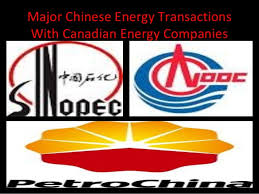
Quo vadis China’s overseas oil and gas investors?
The NOCs scale back
Five or ten years ago, we all knew where China’s national oil companies (NOCs) were going. The answer was ‘almost everywhere, and big’. What had started as putting a toe in the water in the early 1990s had grown into an outward investment binge with a total value of somewhere close to US$ 200 billion within 20 years. The acquired assets were spread across the world, and included oil and gas, offshore and onshore, deep water, unconventional resources, pipelines, LNG plants, refineries and gasoline stations.
The fall of oil prices in 2014 saw a plunge in the annual value of overseas acquisitions from about US$40 billion in 2013 to effectively zero in 2016. In addition, the NOCs were primary targets of the anti-corruption campaign that intensified in 2013. This ensured that no senior executive had the appetite or time to any risks, let alone undertake overseas investment. The low oil prices were also revealing the folly of earlier forays, notably Sinopec’s purchase of Addax in 2009, its acquisition of 49% of Talisman in 2012, CNOOC’s purchase of Nexen in 2013, and moves by both PetroChina and CNOOC into Alberta’s oil sands.
Unlike the international oil companies, China’s NOCs have not undertaken many large asset sales, at least not overseas. At home they have spun off and sold off shares in assets, such as pipelines and gasoline stations, and have reportedly cut back on head office staff to reduce costs. Sales of overseas assets have either been small in scale or carried out under the radar. The largest potential deal so far is Sinopec’s planned sale of its oil assets in Argentina which it purchased in 2010 from Occidental for US$ 2.45 billion. The asking price is reported to be in the range US$ 500-600 million which would represent a 75% loss in value. As an analyst remarked to me a couple of years ago: ‘who wants to be the CEO who sells a national asset at a massive loss?’. One must deduce the Sinopec’s financial position is sufficiently dire the it had no choice. In Venezuela the company is suing PDVSA for an unpaid bill.
Rising oil prices and a lightening of the anti-corruption campaign for the NOCs saw the companies return to the international arena in 2017. CNPC joined Total in Iran’s South Pars gas field and purchased a stake in Abu Dhabi’s ADCO. CNOOC enhanced its position in Africa as well as winning two blocks in Mexico’s first deep water round. Sinopec is battling Glencore to buy Chevron’s downstream assets in South Africa. Nevertheless, with an aggregate value of just a few billion, the level of outward investment in 2017 was probably the lowest for 15 years or more.
The independents reach out
The NOCs may have had a quiet four years, but China ‘independent’ companies have been taking advantage of low prices to build their overseas oil and gas portfolios. The term ‘independent’ should be taken with a pinch of salt, because few sizable energy companies in China are truly independent of central or local government; yet they are clearly distinct from the NOCs.
Chinese energy companies other than NOCs have only started to invest overseas since about 2006. CITIC Resources Holdings has made investments in Kazakhstan and Indonesia. Shaanxi Yanchang Petroleum, which was founded in 1905, has investments in at least three African countries, as well as in Canada. Xinjiang Guanghui Energy appears to be focused entirely on Kazakhstan, taking advantage of its base in Xinjiang, whilst Hoifu Energy is active in Africa. A number of other companies investing in overseas oil and gas assets tend to have their roots in property, technology, trading, or finance. Of these the largest is the sovereign wealth fund, China Investment Corporation.
But all these are small players against CEFC, which is a massive conglomerate with diverse domestic and international interests. The scale of CEFC’s recent acquisitions puts the NOCs in the shade, notably the US$ 9.1 billon it paid for a 14% stake of Russia’s Rosneft in late 2017. It also partnered CNPC in its ADCO deal. CEFC now claims to be China’s largest private oil and gas company, with 50,000 employees, many hired from the struggling NOCs. Although it is officially privately-owned, CEFC’s access to funding and the scale of some of its overseas deals suggests that, at the very least, it has excellent connections at the highest levels of government and party in China.
The outlook?
If the ‘independents’ appear to be the taking the lead in overseas oil and gas activity, in the short-term at least, where does that leave the NOCs? Prices may be rising, and the focus of the anti-corruption campaign may have shifted, but the NOCs are under scrutiny in two other respects. First, the Communist Party is taking steps to tighten its control over all SOEs, requiring not only that they make profits but also that all key decisions are referred to enterprises’ internal party organisations. Second, a system to audit the overseas assets of China’s SOEs will be set up for the first time. In parallel, the government is requiring SOEs to enhance their internal compliance systems.
In this context, the new batch of NOC CEOs might be well advised to follow Sir John Falstaff’s edict that ‘discretion is the better part of valour’. If international oil prices continue to rise or at least hold steady at US$60-70 per barrel, then we should expect the level of outward invest to rise steadily, but that greater care will be taken over the choice of asset and the price paid. The Belt and Road Initiative may provide a loose guide to investment locations, but is unlikely to be binding in any way.
Although not an NOC, CEFC remains a dark horse that seems to be immune to the constraints facing the NOCs. Likewise, other Chinese ‘independents’ may continue to build their international portfolios, though at a smaller scale.

